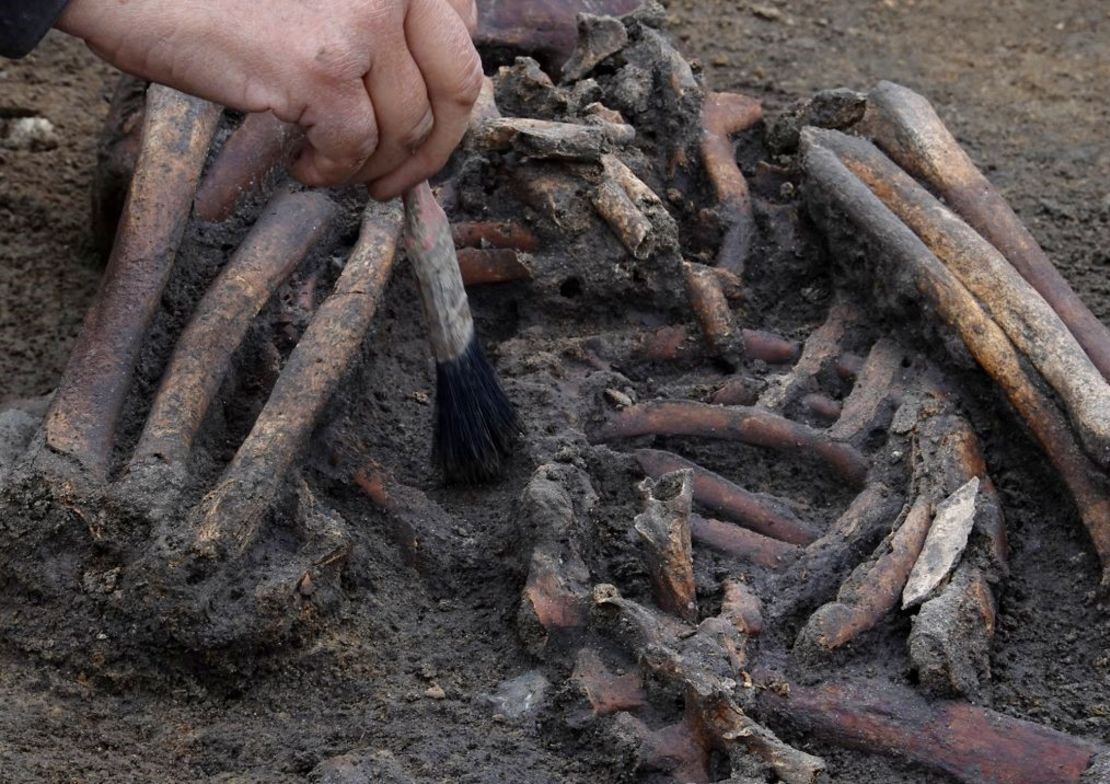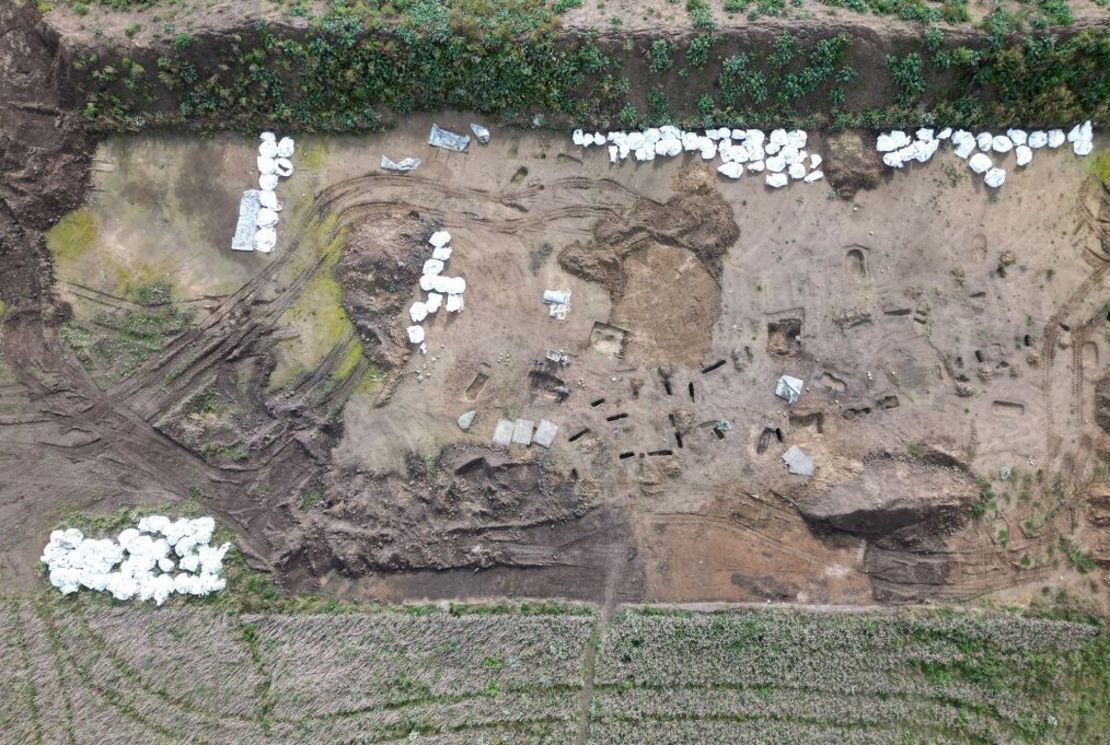(CNN) – Danish archaeologists have discovered more than 50 “extremely well-preserved” skeletons in a large Viking-era cemetery in the east of the country.
A team from the Odense Museum has spent the past six months excavating the Osum site, which is about 2,000 square meters in size and is believed to date back to the 9th and 10th centuries.
The skeletons were buried alongside artifacts from outside Denmark’s borders, indicating that the Vikings traveled widely for trade, according to the museum team.
Michael Burri Londo, an archaeologist and museum curator, told CNN that it is extremely rare to find Viking remains in such a good state of preservation.
“A lot of times, when we excavate Viking Age bodies, we’re lucky if there are only a few teeth,” he said in a phone interview Tuesday.
He added that it was the conditions of the site that helped preserve the skeletons in good condition.
“At this particular site, there is a lot of chalk in the soil, which helps preserve bones, and there is also a lot of natural water in the soil,” he said. “For long periods Viking corpses were covered in water, which slowed the decomposition of the bones.”

Archaeologists were called in to excavate the area as part of work to renew the electrical network.
“We had no idea there was a cemetery there containing Viking skeletons,” Londo said.
“It is truly unusual to find such a large number of well-preserved skeletons at one time, such as those discovered at Ossum,” he added separately in a press release.
He said: “This discovery provides exceptional opportunities to conduct a wide range of scientific analyses, which could reveal more about the general health, diet and origins of the buried.” “The analyzes could also reveal whether the buried Vikings are related to each other, which would be of particular interest because this has not been examined before in similar graves.”
The objects found buried alongside the skeletons also indicate a lot about the deceased, such as their status in society and how far they may have traveled for trade.
Perhaps the most important of these skeletons is the skeleton of a woman who was found buried in a cart, which is the upper part of a Viking cart that was used as a coffin.

“The woman was buried in the vehicle she may have been traveling in,” Londo said in the news release. We have to imagine that they buried her with her best clothes and possessions. They gave him a beautiful necklace of glass beads, an iron key, a knife with a handle of silver thread, and, above all, a little piece of glass that might serve as an amulet.
“At the foot of the cart was a beautifully decorated wooden box, the contents of which we still do not know.”
The grave of another person nearby contains a thin three-lobed bronze brooch, a single red crystal bead on a rope around the deceased’s neck, an iron knife, and a small piece of rock crystal.
According to Londo, this stone had special significance.
“Rock crystals do not occur naturally in Denmark, and were probably imported from Norway. Many objects from the numerous graves at Osum indicate that the buried Vikings were connected to international trade networks that developed during the Viking Age,” she said in the statement.
According to the statement, the discovery of the burial confirms that Osum was a key geographical point for early urban developments, which eventually led to the formation of Odense, the third largest city in Denmark.

Archaeologists are still excavating part of the site area, but most of the skeletons and artifacts are now in the museum awaiting further examination.
“Now the skeletons are drying a little before we can wash them and send them to Copenhagen for further examination,” Londo told CNN.
Among other things, scientists in the Danish capital will try to extract DNA from the remains to learn more about the people buried there.
“This is going to be very exciting,” Londo told CNN. “I think that will give us a much better idea of people’s age, their gender, what diseases they might have and whether they are related.”






More Stories
Nicaragua picks up and delivers to El Salvador four subjects circulated by Interpol
UN experts have warned of serious human rights violations in the context of the presidential elections scheduled for July 28 in Venezuela.
The Organization of American States deploys observers for the US elections